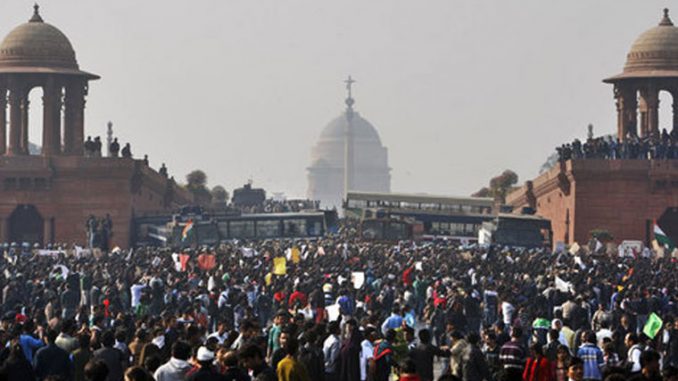
In News
According to the Lancet Report, India will be the world’s most populous country by 2100.
In-Detail
- According to the Lancet Report, India’s population will be 1.6 billion by 2048, whereas the working-age population is estimated to decline from 950 million in 2017 to 357 million in 2100.
- The Lancet Report used novel methods for forecasting fertility, mortality and migration.
- Researchers from the Institute for Health Metrics and Evaluation (IHME) at the University of Washington’s School of Medicine used data from the Global Burden of Disease Study 2017 and concluded that by 2100, 183 countries will have total fertility rates below the replacement level of 2.1 births per woman.
- According to the study, there will be a decline in the working population in countries like India and China. This may result in hampering the economic growth rate and shifts in global power.
- The working aged 20-64 in India is projected to decline from 762 million in 2017 to around 578 million by 2100.
- The report shows that India will have the largest working-age population in the world by 2100 and the second-largest net immigration.
- The global Gross Domestic Product (GDP) ranking of India is expected to rise from 7th to 3rd.
- The present total fertility rate (TFR) in India is below 2.1 in 2019 and is projected to have a TFR of 1.29 by 2100.
- According to the study, 23 countries’ populations may shrink by 50% including Japan, Italy, Spain and Thailand.
- The world’s population is predicted to rise by 9.7 billion in 2064 and fall to 8.8 billion by the end of the century.
- The report highlights the challenges to the economic growth of the shrinking population, health and social support systems of the aged population, shift in global age structure.
- The global age structure is estimated by 2.37 billion individuals over 65 years in 2100 globally.
Conclusion
The report suggests that the countries should move towards liberal migration policies, survival improvements at all ages, economic independence to women, and investment in the advanced technology that can compensate for the human shortage.
Though the current population levels favour India for decades to come, it will eventually see a decline in its working age population. This means, the governments must focus on augmenting the existing elderly care centres, more resources must be poured into geriatric care, and develop technological capabilities that will compensate for the less working age population.
But, the reality is, India is not thinking in that direction. Across the country, elderly care is being considered as a loss of investment. In the coming future, there will be a huge demand for elderly homes. Estimates from 2011 Census suggest that there is a need for 2.4 lakh elderly residential units in urban areas and 51,500 units in rural areas. As the elderly population increases, the requirement for these houses increases. But, India is nowhere near having such facilities by 2100.
Any country that doesn’t care for its elderly is a country with a weak moral core. When the country is aspiring to be one among the best of nations in the world, India cannot ignore its elderly. It is time, the government enacted policies for its future elderly population.

Leave a Reply
You must be logged in to post a comment.